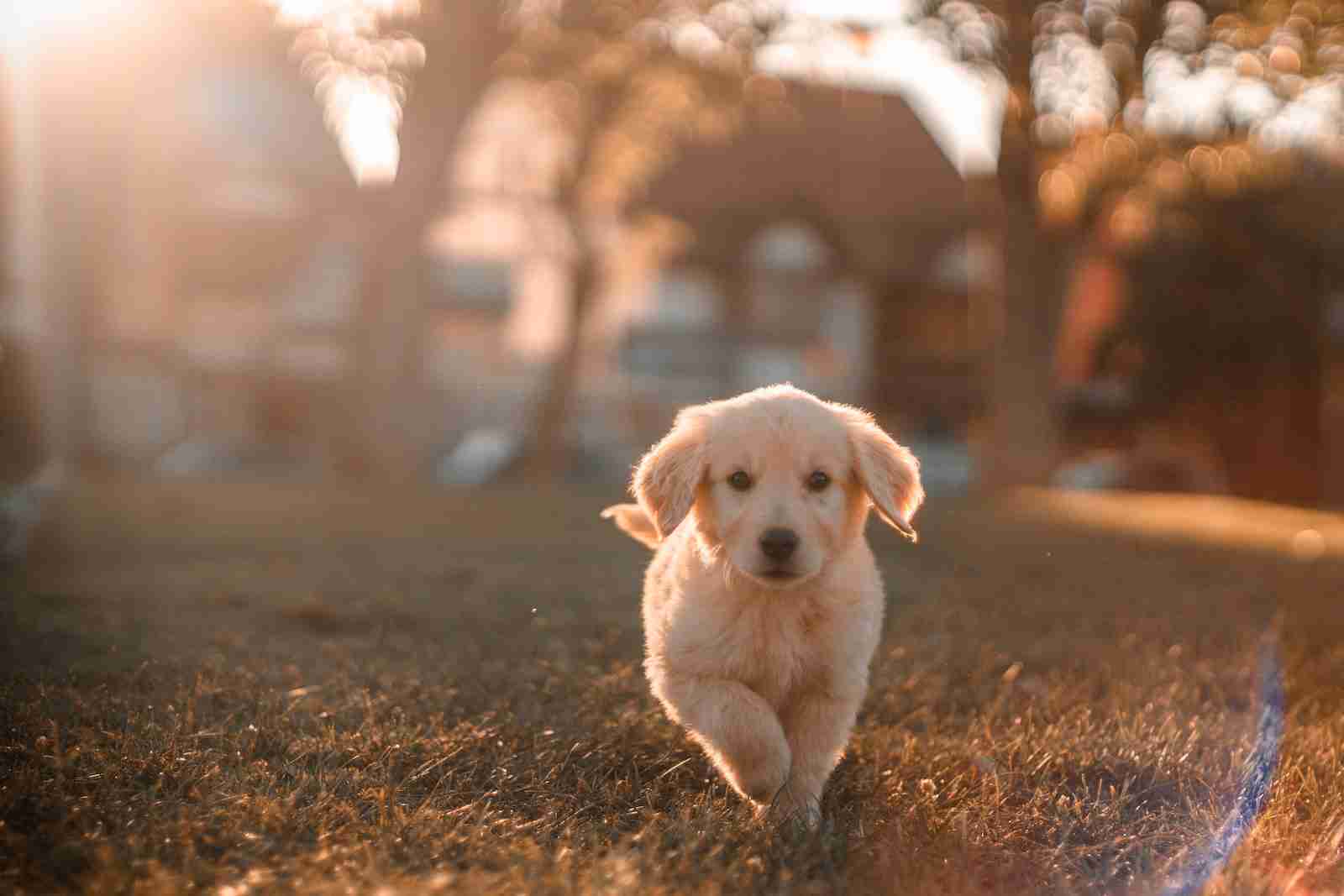25 Facts About Dogs You Never Knew
1. Dogs have been domesticated for more than 14,000 years.
Dogs are unique in that they were some of the first animals to be tamed by humans of all other species. It’s believed that their uncanny ability to bond with people set them apart and helped create relationships between humans and animals alike.
A common bond was built on the advantages both sides had: humans offered a safe home and food, while dogs offered protection, companionship, and unmatched loyalty.
2. The average lifespan of a dog is 10–13 years.
Dogs come in many different shapes and sizes, with lifespans varying from breed to breed. On average, pooches typically live between 10 and 13 years—a lifespan that can, unfortunately, be shortened by various factors such as lifestyle choices and genetics.
Ordinarily, bigger dogs don’t tend to live as long as their smaller companions, while certain breeds are known to have particularly long lifespans due to favorable inheritance.
3. 45 percent of U.S. dogs sleep in their owner’s bed.
Around 45% of dogs in the U.S. find a cozy spot to sleep on their owner’s bed instead of their own. This shows how close dogs and their owners can get, sharing not just space but also a bit of warmth and safety at night. It’s pretty common for people to let their dogs snuggle up with them, showing a lot of love and trust in this simple act.
This choice might stir up some talk about whether it’s good for sleep or cleanliness, but it sure does make the bond between them stronger.
4. Dogs have twice as many muscles in their ears as humans do.

Listening to Power of Dogs.
Dogs have exceptional hearing abilities that outperform human abilities. This advantage stems from the fact that they have twice as many muscles in their ears compared to us.
Of course, the added capability of these extra muscles immensely sharpens a dog’s sensitivity to noise, enabling them to audibly recognize sonic differences others can’t, like wildlife or faraway circumstances attributing to their nature as becoming watchful sentinels.
5. Dogs have a sixth sense, which helps them sense danger before humans do.
A dog’s heightened intuition can instinctively alert them of the approach of danger, acting as an early warning system greatly beneficial to their humans.
By analyzing energy patterns in their environment well before humans register any type of threat, a dog’s sixth sense allows them to base their reactions on more than just sight and sound.
Depending on the situation, this primitive trait can be used to spin fright into a superpower and recognize situations that could endanger its owners before they do.
6. Dogs have three eyelids to protect their eyes from dirt and dust.
This third eyelid is protective, working to regulate moisture levels in their eyes and shield them from dirt, dust, and other particles.
It is uniquely equipped with lubricating glands to keep the eye comfortable and moist.
7. Dogs can recognize up to 250 words and gestures, some even more.
Even more impressive is the fact that some dogs can even remember more! In particular, clever breeds like Collies and Australian Shepherds have an impressive capacity for recollection and recall.
Research indicates that many dogs can remember well over 150 words, recognizing objects and commands without fail. Human communication with our canine companions is just beginning to uncover the full scope of their intellectual aptitudes.
8. Dogs can be trained to detect bombs, drugs, and even diseases such as cancer.
Dogs are highly adaptable and can be trained to detect specific substances, outperforming machines in accuracy. They can identify everything from explosives to illegal drugs.
Moreover, research has shown that dogs can detect various diseases, including cancer, with remarkable precision, offering early diagnosis and better chances for effective treatment.
9. Dogs have a stronger sense of smell than humans.
It’s said they can detect scents at concentrations up to 100 million times lower than what humans notice. Some breeds have even more acute senses of smell, with incredible abilities to identify as slowly as a single drop of scent.
We dramatically underestimate the capacity of their schnozes – hundreds and hundreds of molecules get analyzed in mere moments. Dogs truly have capabilities that make us scratch our heads in amazement.
10. Dogs sniff each other’s butts to learn about each other.
Dogs sniff each other’s butts as a key social and communicative behavior. This action allows them to learn about another dog’s identity, health, diet, mood, and more through the unique scents secreted by anal glands.
This practice, deeply rooted in their evolutionary history, is a vital part of their interaction and understanding of one another in the canine world.
11. The Basenji breed can yodel instead of barking.
The Basenji dog doesn’t bark like most dogs. Instead, it makes a unique sound that’s a lot like yodeling. This is because of how its voice box is shaped, which is different from other dogs. So, when a Basenji tries to bark, what comes out is a mix of chirps and yodels.
This special trait makes the Basenji stand out. People who live in places where keeping quiet is important often choose this breed. This doesn’t mean they’re silent, though; they find their own special way to speak up.
12. Dogs get jealous, displaying emotions similar to those of a two-year-old child.
Dogs indeed experience jealousy, exhibiting emotions comparable to those of a two-year-old human child. This emotional response can be triggered when they perceive a threat to the attention or affection they receive from their owners, especially when directed toward other animals or people.
Studies have shown that dogs can exhibit signs of jealousy, such as nudging, whining, or even aggressive behavior when their owners show affection to someone or something else.
13. Dogs have the ability to learn new tricks and commands much faster than other animals, including humans.
Dogs possess an amazing ability: the capacity to learn new tricks and commands swiftly. In terms of adroitness, this clever creature surpasses other animals—even humans. This is a result of hounds being highly in tune with their home environments, as any pup owner will vouch.
Studies even show behaviors like pawing and barking stem from being able to comprehend the communication of others at a paltry twelve weeks old.
Along with quick absorption due to pre-existing good listening skills, the consistent use of reward systems cements faster bark command mastery in dogs over others.
14. Dogs have a special bond with their owners and can detect when they are feeling sad or stressed.

Dogs Sense and Respond to Our Emotions.
Dogs develop incredibly deep and special relationships with their owners. They can read physical alterations in the owner and sense shifts in mood.
Dogs are capable of picking up on any sadness or stress that their beloved humans may be feeling, making them undoubtedly loyal companions.
Humans will find exceptional solace in a dog’s hidden ability to know when they need companionship, as these loving creatures inevitably bring joy and comfort into our lives.
15. Dogs can smell fear, which is why they often bark or act aggressively.
Dogs have an acute sense of awareness, allowing them to detect fear, a skill passed down from their ancestors. This ability, often referred to as cyber olfaction, helps them sense the emotional state of their surroundings.
They may bark or act protectively if they detect fear, enhancing their role as vigilant protectors and providing a sense of security to their human companions.
16. Dogs are not color-blind; they can see blue and yellow.
It’s a common myth that dogs can’t see any colors, but that’s not true. They actually can see colors, just not as many as humans do. Dogs are really good at seeing blue and yellow. This means when they look around, they can tell the difference between these two colors quite well.
Their world isn’t just shades of gray; it has splashes of blue and yellow. This helps them in their daily lives, like figuring out which toy is which or noticing something important in their environment.
17. Dogs can sense changes in barometric pressure.
Dogs have an extraordinary intuition for detecting weather changes, partly due to their advanced sense of smell and hearing. They can perceive infrasounds and subtle cues that predict weather events like storms, even before visible signs appear.
Their ability to sense changes in barometric pressure and convert air particles into scent-based spatial representations helps them anticipate different types of storms, showcasing their remarkable instinctive understanding of environmental shifts.
18. All puppies are born deaf, developing their hearing as they grow.
When puppies come into the world, they can’t hear anything; their ears are not yet working. As they start to grow, their hearing begins to develop.
This change happens over the first few weeks of their lives. At first, the world is silent to them, but gradually, they start to hear sounds around them, from their mom’s comforting noises to the hustle and bustle of human life.
19. Dogs pant to cool themselves down because they do not have sweat glands as humans do.
Dogs have incredibly efficient cooling systems built into their physiology, an oftentimes overlooked but very vital process that helps regulate their body temperature. Dogs do not have the same level of sweat glands that humans do, leading to the need to use alternate methods of heat regulation.
It’s why they pant rapidly, with short intakes of breath followed by a partially exhaled breath with minimal transition in between breaths, which typically start when a dog is under tension or manifesting signs of stress.
20. The Beatles’ song A Day in the Life contains a frequency only dogs can hear.

The Unique Taste Buds of Dogs.
The Beatles’ song A Day in the Life, from their iconic Sgt. Pepper’s Lonely Hearts Club Band album includes a unique element specifically for dogs.
Paul McCartney, a member of the band, revealed in an interview that they added a high-frequency whistle sound to the end of the track, which is beyond the range of human hearing but can be heard by dogs.
This frequency was intentionally embedded in the song as a playful experiment to engage canine listeners.
21. Dogs have 300 million olfactory receptors in their noses.
Dogs have around 300 million olfactory receptors in their noses, compared to 6 million in humans, greatly enhancing their sense of smell. This allows them to perceive and remember an astonishing range of 10,000 to 100,000 different odors, far beyond human capabilities.
Their exceptional olfactory ability is unmatched in the animal kingdom, enabling them to detect scents and wavelengths unnoticed by humans. The smell center of a dog’s brain is 40 times larger than a human’s, contributing to their superior sense of smell.
22. Dogs can be taught to find lost items such as keys or wallets.
They can be trained to understand the importance of locating lost things, whether it’s keys, wallets, or other such items. Many humane societies, rescue centers, and shelters now offer classes that teach puppies and dogs to practice this skill.
Dogs have a powerful sense of smell, and they use it to their advantage when searching for forgotten items.
23. Dogs have dreams and can have nightmares, often dreaming about playing with their owners.
Just like us, dogs dream too. When they sleep, they might have dreams where they’re running around and playing with their owners, enjoying happy moments. But dogs can also have nightmares, where they might feel scared or anxious.
You can sometimes tell if they’re dreaming by watching them move their paws or twitch as if they’re chasing something in their sleep.
24. Dogs dig to create a cool place in the summer or a warm place in the winter and bury food for later.

Dogs instinctively dig to regulate their body temperature, creating cool spots in summer and warm burrows in winter. This behavior is rooted in their evolutionary past. They also bury food, a survival instinct from their wild ancestors, enhancing our understanding of their natural behaviors.
25. Alaskan Malamute can pull up to 12 times their own body weight.
The Alaskan Malamute, known for its strength and endurance, showcases an impressive ability among adult males to pull loads up to 12 times their own body weight.
This impressive pulling strength is a testament to the breed’s historical use as a sled dog in Arctic regions. Alaskan Malamutes have been traditionally employed for hauling heavy loads, showcasing their power and dependability in challenging terrains.
FAQS
It is difficult to determine definitively which breed of dog is the “smartest,” as intelligence can be measured in a variety of ways and can be influenced by many factors, including genetics, training, and environment. According to the American Kennel Club (AKC), the top five most intelligent breeds of dogs, in order, are:
Border Collie
Poodle
German Shepherd
Golden Retriever
Doberman Pinscher
The origin of the domesticated dog is a topic that has been debated for centuries among scholars and experts. One popular theory suggests that the first dogs originated in ancient Eurasia, with the domestication of wolves around 15,000 years ago. However, new evidence based on genetic research points to an earlier date of domestication, with dogs being present in the Middle East and Europe as far back as 40,000 years ago.
Dogs lick you as a way of showing their affection. They may also lick you to get your attention or to request something, such as food or water. Dogs may also lick a person because they have anxiety or stress, and licking can help to make them feel better.
Dogs are able to see shades of blue, yellow, and gray, but they may have difficulty distinguishing between shades of red, green, and orange.
The Siberian Husky and Alaskan Malamute are two breeds that are thought to be the closest to wolves in terms of physical appearance and behavior. These breeds were developed by the Chukchi people of Siberia and were used for sledding and hunting. They have a wolf-like appearance and are known for their high energy and endurance.
Many people consider different breeds to be the cutest, such as the Pomeranian, French Bulldog, or Golden Retriever.
There are hundreds of different breeds of dogs, which can be categorized into several groups such as Sporting, Hound, Working, Terrier, Toy, Non-Sporting, Herding, and Mixed Breed dogs. Each breed has its own unique characteristics, temperament, and physical traits. Some popular dog breeds include Labrador Retrievers, German Shepherds, Golden Retrievers, Bulldogs, Beagles, Poodles, and Chihuahuas, among many others.







